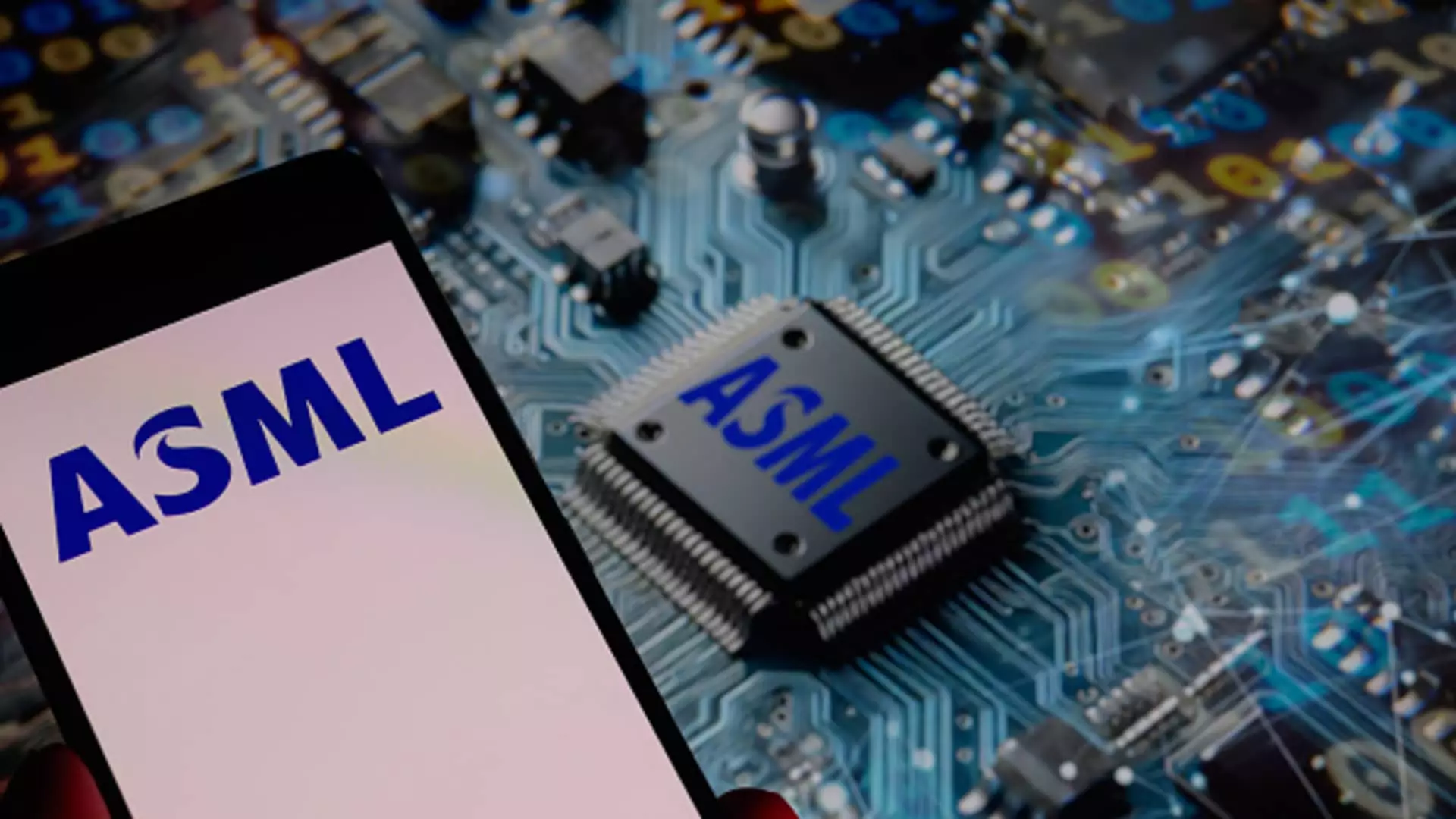Despite a seemingly positive quarter, ASML’s latest financial disclosures paint a starkly different picture—one shrouded in uncertainty amid mounting industry turbulence. The company’s recent beat on earnings and sales figures can be mistaken for robust growth, but beneath the surface lies a fragile landscape where optimism is increasingly tempered by geopolitical strife and economic instability. In a sector as vital as semiconductors, the seeming vitality of ASML’s performance—highlighted by record net bookings—belies a deeper vulnerability that demands critical examination.
The market’s initial bullish reaction, evidenced by a 6.5% drop in shares shortly after opening, underscores the disconnect between short-term indicators and long-term realities. The company’s narrowed forecast for 2025, projecting a growth rate of just 15%, signals a major shift from earlier, more exuberant predictions of 30-35 billion euros in revenue. This undoubtedly reflects a growing recognition of the industry’s mounting challenges, especially for a company whose fortunes are intertwined with global geopolitics, regional tensions, and the careful dance of export policies—and tariffs—imposed by the United States.
Unearthing the Roots of Industry Uncertainty
ASML’s predicament is emblematic of the broader semiconductor industry, which is increasingly caught in the crossfire of superpower conflicts. The company’s success hinges on the delicate export and deployment of EUV (Extreme Ultraviolet) lithography machines—tools essential for manufacturing cutting-edge chips. Yet, political restrictions threaten to choke off supply chains and suppress demand, especially from key clients like Intel, Apple, and Nvidia. The company’s cautious stance on 2026 forecasts, citing macroeconomic and geopolitical uncertainty, reveals an industry that is no longer operating within predictable parameters.
Notably, ASML’s optimistic remarks about AI-driven demand serve as a double-edged sword. While AI represents a significant growth driver, it is also a fragile trend susceptible to regulatory backlash, technological hurdles, and market saturation. The new High NA EUV platform, worth hundreds of millions of dollars, epitomizes the company’s reliance on not only technological innovation but also on a consistent pipeline of blockbuster orders. Even with the shipment of just one such machine, the company’s optimism masks the underlying risks of overdependence on a narrow technological niche.
The Mirage of Robust Demand
While net bookings exceeded analyst expectations, the underlying context warrants skepticism. The increase to 5.5 billion euros, surpassing the 4.19 billion euro forecast, appears impressive but can be considered a misdirection—one driven by a narrow set of client upgrades and short-term tactical purchases rather than sustained, global demand. The core question remains: can these seemingly strong numbers translate into actual, stable revenue in a climate where supply chain disruptions, trade restrictions, and economic downturns threaten to derail growth?
Furthermore, the company’s assertion that tariffs had a “less negative” impact is a paper-thin reassurance. The reality is that tariffs have created asymmetries—favoring certain regions and companies while strangling others. This uneven playing field hampers the global semiconductor ecosystem and casts doubt on future sales trajectories. ASML, as a leader in EUV technology, now finds itself at the mercy of these multilayered geopolitical chasms, arguably undermining its foundational growth assumptions.
Critical Reflection on the Industry’s Future
While ASML’s leadership remains cautiously optimistic, the broader industry should not be lulled into complacency. The semiconductor supply chain is increasingly fragile, shaped by political conflicts, economic fluctuations, and an insatiable demand for advanced chips that may ultimately be unsustainable. The company’s expectation of growth in 2026 is an acknowledgment of this fragility—a gamble on a global landscape that seems increasingly unpredictable.
Moreover, ASML’s heavy investment in expensive, cutting-edge EUV machinery, such as the High NA systems, underscores a risky bet on technological leaps that may not materialize at the anticipated scale. These machines represent high-stakes gambles—if they do not significantly accelerate chip production or if demand wanes, the financial strain could be substantial. The industry’s trajectory hinges on factors far beyond technological prowess alone; it is subject to policy shifts, trade wars, and economic cycles that threaten to render even the most advanced tools obsolete or unaffordable.
In sum, the narrative of growth and technological ascendancy painted by ASML masks a complex and uncertain reality. Its apparent success is heavily dependent on external factors that remain beyond its control. The industry’s future, far from being assured, is precariously balanced on geopolitical skirmishes and economic headwinds—forces that could undermine years of progress in an instant. It is vital to approach such optimistic projections with skepticism and recognize the underlying fragility that many analysts choose to ignore.

